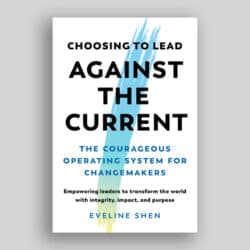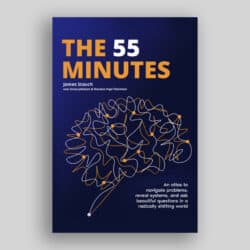A new book by UK historian Rhodri Davies defines philanthropy not as a stand-alone concept but in relation to social values and political and economic systems – and casts a searching eye on its dilemmas. Reviewer Hilary Pearson recommends it as a good starting point for any new philanthropist or student of philanthropy.
What Is Philanthropy For? by Rhodri Davies. Bristol University Press, 2023; 160 pp; ISBN 978-1529226928.
Most of us have heard the oft-repeated definition of philanthropy as “love of humankind.” The word “philanthropia” was derived, we are told, from the original Greek words anthropos and philos. Yet as a definition, it is sorely lacking. It does not tell us what shape philanthropy has or how it operates in human life. In what way does philanthropy demonstrate a love for humanity? What is its function in our society? And what is its legitimacy? Can we even agree on who could or should be called philanthropists?
In his new book – What Is Philanthropy For? – Rhodri Davies, a UK commentator and historian of philanthropy who is a fellow at the Centre for Philanthropy at the University of Kent, takes a different definitional tack. He defines philanthropy not as a stand-alone concept but in relation to social values and political and economic systems. By discussing how philanthropy may be understood in relation to these values and systems, he compiles a broader definition of modern philanthropy. He also casts a searching eye on its dilemmas.
Davies’s aim is to illustrate the significance of philanthropy, not as a niche issue but as a major force shaping our societies.
Davies takes his title question from a new series launched by Bristol University to examine the purposes of the most important aspects of our contemporary world – war, cybersecurity, religion, free speech, history, nuclear weapons, et cetera. For each topic, an author will explore what it’s for and how it could work better. To answer his question, Davies has cleverly clarified what philanthropy is for by defining what it is not. He structures his short book around five dichotomies: between philanthropy or charity, justice, the state, democracy, and the market. In doing so, his aim is to illustrate the significance of philanthropy, not as a niche issue but as a major force shaping our societies. “At micro level,” says Davies, “it reflects fundamental truths about the values we hold and how we interact with each other. … at macro level, philanthropy is a vital mechanism for redistributing resources within society alongside the state and the market.”
Davies believes that philanthropy has developed through the centuries into a practice that can be differentiated from charity. He sets up a somewhat artificial debate in his chapters on philanthropy or charity, and philanthropy or justice. Using his deep and wide-ranging knowledge of the history of charitable giving, particularly in the United Kingdom and Western Europe, he describes the Judeo-Christian tradition of giving alms or charity as a displacement of the ancient Greek concept of philanthropy as “civic virtue.” He acknowledges the secularization of charity in the 17th century after the Reformation and the Enlightenment. But he argues that the distinction between philanthropy and charity that became sharper in the 19th and 20th centuries centred not on a secular versus religious difference, but on philanthropy’s emphasis on a rational and “scientific” approach to the root causes of poverty, disease, and ill health. In this definition, philanthropy is a data-driven exercise to make effective use of private resources for systemic public benefit, while charity is an individual act of benevolence – the head of philanthropy versus the heart of charity. In practice, the distinction is less clear. While the way in which Davies sets up his approach suggests that the reader should think of philanthropy as something other than charity or justice, a good deal of philanthropy is driven by human kindness and emotion, even if many donors, especially those working through a foundation, are advised to be strategic and evidence-based in their choices.
Similarly, the distinction between philanthropy and justice may not be so clear-cut, although Davies, for purposes of debate, provocatively asks, “Could philanthropy be actively opposed to justice?” He points to the many past and present critics of philanthropy who have said that philanthropy perpetuates injustice rather than addressing it. Whether because the wealth that philanthropy is based on has been created though exploitation or extraction, or because philanthropy props up existing systems of inequality and injustice, these critics argue that philanthropy can never be just. Tainted money cannot serve to repair or compensate for oppression. Davies cites the now notorious philanthropy of the Sackler family as the example of tainted elite philanthropy at its worst. But other major and long-standing philanthropic players in the United States such as the Ford Foundation have refocused their mission on overcoming inequality and injustice. Darren Walker, the president of Ford, is much quoted for his plea that philanthropy at Ford and elsewhere shift in its aims “from generosity to justice.” Davies nods to the examples of how philanthropy has in the past supported social movements for the abolition of slavery, women’s suffrage, and the decriminalization of homosexuality. And he acknowledges the increasing efforts since 2020 by some major donors and others in institutional philanthropy to consider participatory grantmaking, trust-based philanthropy, and other ways of redressing power imbalances. The pursuit of social justice remains in uneasy tension with philanthropic power. Yet this does not mean that philanthropy is inherently unjust or unable to advance justice.
The other three dichotomies that Davies discusses are more focused on the political systems and economic structures within which philanthropy exists in Western capitalist countries – democracy, the state, and the market. In his introduction, he quotes philanthropy scholar Robert Payton’s definition of philanthropy as “voluntary action for the public good.” How does voluntary action for the public good fit within a democratic political system where the public good is determined by the people and their elected representatives, not by individual wealthy givers? How does voluntary action align with or complement the actions of the state? And can voluntary action for public benefit be as efficient as the market in allocating resources?
As he moves through his overview of the roles played by philanthropy in relation to the market, the state, and democratic practice, Davies paints the shades of grey in what can seem to be black and white, either/or questions.
Davies explores these questions in general terms. He summarizes the arguments that suggest that philanthropy, particularly “big” philanthropy, can weaken or subvert democracy, by using resources to influence public opinion or shape public policies. At the same time, he notes that philanthropy can contribute ideas to the public debate, take risks, and bet on long-term projects that may be critical to public benefit down the road. Philanthropy can also build civic engagement and democracy directly by supporting public benefit media or helping to train citizens in public policy development. Davies agrees with those who suggest that philanthropy should not apply market-based approaches to the solution of complex social problems. But philanthropy can make good use of market tools such as social investment to contribute to the public good by combining financial and social goals. As he moves through his overview of the roles played by philanthropy in relation to the market, the state, and democratic practice, Davies helpfully paints the shades of grey in what can seem to be black and white, either/or questions.
In a concluding chapter, Davies moves from asking what philanthropy is for to the question of how philanthropy can be made better. He believes that while philanthropy is best used to address social problems systematically at their roots, he advocates for a balance between strategic and more human-centred approaches. While philanthropy cannot substitute for justice, it can be made a more effective tool for furthering justice. Philanthropy is not an alternative to public spending, but it can be clearer about the roles it can play in relation to the state. It can be more active in strengthening democracy and civil society while being more open itself about its operations. All of these are strong suggestions that reinforce the movement toward modernizing today’s philanthropy.
His many quotes and illustrations from literature, philosophy, history, and sociology, and his deft citation of many of the current leading critics of philanthropy, make this an informative and entertaining read.
Picking up Davies’s brisk and readable book would be a good starting point for any new philanthropist or student of philanthropy. His many quotes and historical illustrations from literature, philosophy, history, and sociology, as well as his deft citation of many of the current leading critics of philanthropy, make this an informative and entertaining read.
I have one caveat: Davies writes about philanthropy from an English and anglophone perspective. He cites examples and leaders in American philanthropy, but his main point of reference is British. There are, of course, many other forms of philanthropy and ways of thinking about philanthropy that come from different traditions. Davies assumes a universalist definition that does not take these into account. Nevertheless, his book is a useful introduction to some of the major debates in Anglo-American philanthropy, and he does succeed in his project of helping his reader appreciate the nuance and complexity of philanthropy and perhaps consider how to make it better.


